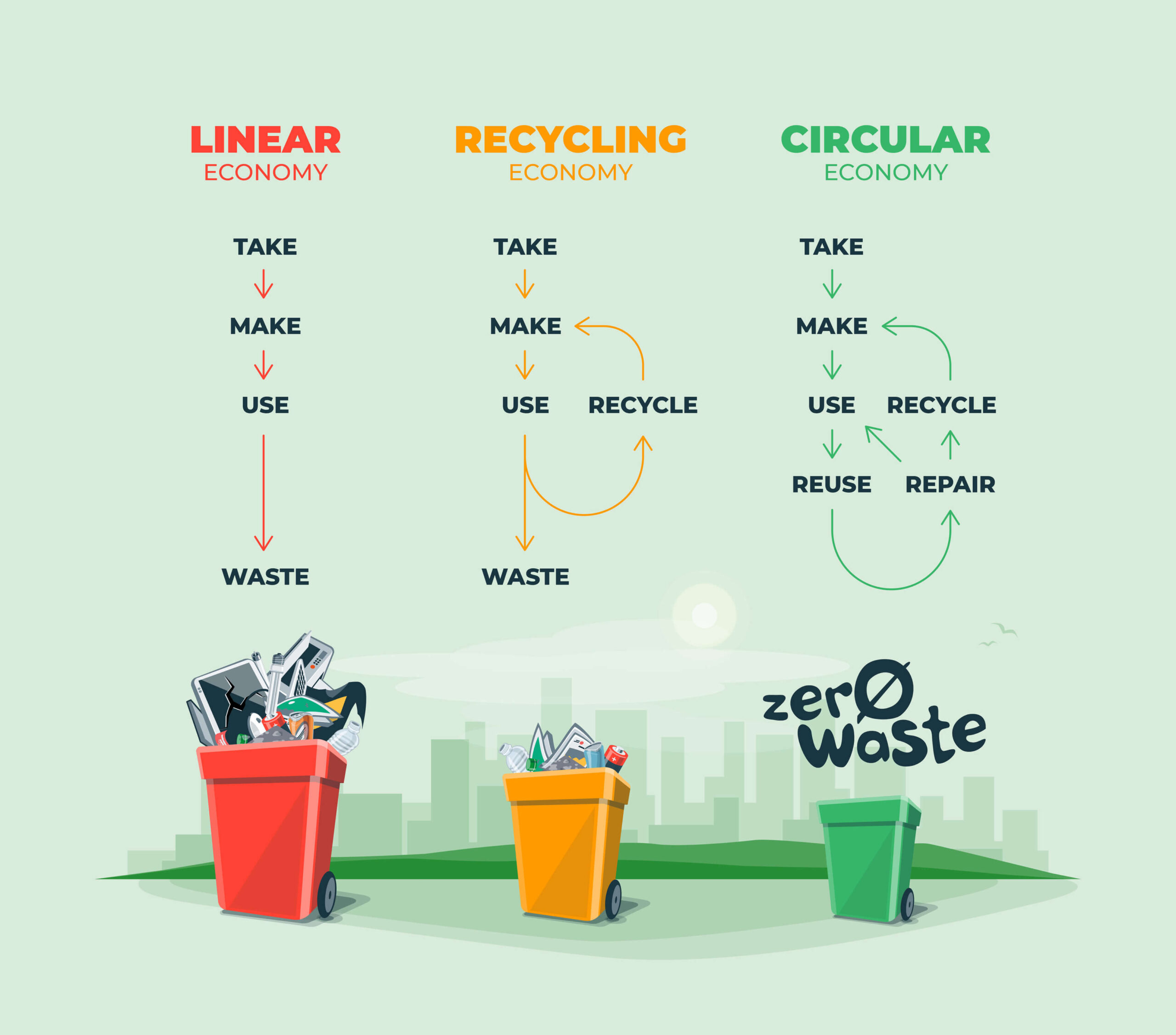Comprehending the Classification and Handling of Various Sorts Of Waste
Effective waste management is critical for environmental sustainability, requiring a detailed understanding of the classification and handling of various waste types. Household waste, industrial spin-offs, harmful products, electronic refuse, and organic remnants each demand distinctive procedures to make sure security and lessen eco-friendly damages. Carrying out proper partition, treatment, and disposal approaches is vital to mitigate adverse environmental impacts and advertise source preservation. The composting of natural waste contrasts greatly with the detailed procedures required to handle unsafe compounds. This complex method to throw away management emphasizes its complexity and the important need for specialized understanding in this domain.

Household Waste
Home waste, encompassing a wide range of thrown out materials created from everyday living tasks, stands for a substantial component of the total waste stream - recycling lives services. This category includes natural waste such as food scraps, yard clippings, and paper products, alongside inorganic products like plastics, metals, and glass. The diverse nature of home waste demands reliable classification and administration to reduce environmental impact and promote lasting living methods
Efficient home waste administration begins with partition at the resource, promoting recycling, composting, and secure disposal. Organic waste, for instance, can be composted to create nutrient-rich dirt modifications, reducing landfill worry and boosting dirt health and wellness. Recyclable materials, including paper, glass, and certain plastics, can be refined and repurposed, lowering and preserving resources energy intake connected with new material manufacturing.
Additionally, dangerous household waste such as batteries, digital gadgets, and cleansing chemicals needs specialized handling to stop soil and water contamination. Public recognition campaigns and convenient disposal alternatives play vital roles in ensuring correct disposal and recycling of these materials. By applying robust waste decrease techniques and cultivating community engagement, municipalities can considerably reduce the ecological impact of house waste.
Industrial Waste
Industrial waste, a significant contributor to worldwide waste generation, encompasses a varied variety of products produced by production, construction, and other commercial activities. Efficient monitoring of commercial waste is vital for decreasing environmental effect and advertising sustainable techniques.
The handling of hazardous waste usually entails numerous processes: collection, disposal, segregation, and treatment. Collection systems are designed to effectively gather waste materials from different sources within a commercial operation. Partition is crucial, as it makes sure recyclable materials are separated from non-recyclable ones, which can be directed towards proper recycling or disposal networks. Therapy processes, including physical, chemical, and organic methods, are utilized to reduce the toxicity, volume, and environmental impact of the waste. Disposal methods like landfilling or incineration are made use of for waste that can not be reused or treated.
Adopting approaches such as waste minimization, source healing, and recycling can significantly lower the concern of commercial waste on the atmosphere, adding to more lasting commercial practices.
Contaminated Materials
Harsh wastes can harm or damage living products and tissues. Combustible wastes can easily fire up, posturing fire risks, while reactive wastes can create surges or release harmful gases upon contact with various other substances.
Effective contaminated materials monitoring entails several essential methods: recognition and partition of harmful products, secure transport and storage space, and appropriate treatment and disposal. Treatment methods may include chemical stablizing, incineration, and neutralization. Governing compliance is crucial, guided by frameworks such as the Source Preservation and Recuperation Act (RCRA) in the USA, which ensures environmentally sound and risk-free monitoring of unsafe waste.
Electronic Waste
Electronic waste, frequently abbreviated as e-waste, represents a growing difficulty in waste management because of the fast obsolescence of innovation. This classification includes a broad range of disposed of digital gadgets, consisting of smart devices, computer systems, tvs, and house devices. The intricacy of e-waste hinges on its composition; these things consist of a blend of important materials such as gold and copper, as well as dangerous materials like lead, cadmium, and mercury.

Regulation and laws, such as the European Union's Waste Digital and electric Devices (WEEE) Directive, objective to promote liable e-waste monitoring. These plans mandate makers to help with the collection and recycling of electronic items, therefore lowering the problem on garbage dumps and reducing environmental contamination.
Organic Waste
Organic waste, incorporating naturally degradable materials such as food scraps, backyard trimmings, and farming residues, comprises a substantial part of the municipal solid waste stream. This type of waste is noteworthy not only for its quantity however also for its possible environmental influence otherwise managed appropriately. Organic waste can break down anaerobically in landfills, generating methane, a potent greenhouse gas adding to climate adjustment.
Appropriate handling of natural waste includes numerous strategies. Furthermore, drawing away food waste from land fills through donation programs can ease food instability while minimizing waste.
Municipalities and services are significantly identifying the importance of organic waste administration. Carrying out thorough natural waste reusing programs not just mitigates environmental impacts but likewise lines up with wider sustainability goals, promoting a circular economic climate where sources are constantly reused and repurposed.
Final Thought
Reliable waste administration and ecological security demand a this post thorough understanding of the category and handling of various waste types. Implementing proper methods for each waste kind ensures liable and safe waste Going Here administration practices, eventually adding to the security of ecological communities and public health and wellness.
Reliable waste management is essential for environmental sustainability, needing a comprehensive understanding of the classification and handling of numerous waste types.Family waste, encompassing a wide selection of disposed of products created from daily living activities, stands for a significant element of the overall waste stream.Industrial waste, a major factor to international waste generation, encompasses a varied array of products produced by manufacturing, building and construction, and various other industrial activities (recycling lives services).Unsafe waste, an essential worry in waste monitoring, comprises materials that present substantial threats to human wellness and the environment due to their toxic, corrosive, flammable, or reactive properties.Organic waste, encompassing naturally degradable products such as food scraps, backyard trimmings, and farming deposits, constitutes a considerable section of the municipal solid waste stream